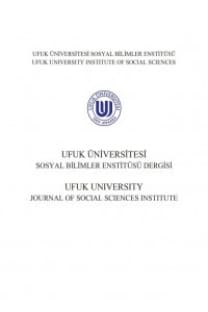Bir Hazırlık Okulu Programının Gereksinime Dayalı Değerlendirmesi: Birinci Sınıf Öğrencilerinin Deneyim ve Düşünceleri
Bu çalışma Gazi Üniversitesi Yabancı Diller Yüksekokulu'nda uygulanan İngilizce öğretim programını, birinci sınıf öğrencilerinin bakış açısıyla değerlendirmeyi amaçlamıştır. Bu doğrultuda, hazırlık programının öğrencilerin dil gereksinimlerini ne ölçüde karşıladığını ve öğrencilerin program hakkındaki düşüncelerini belirlemek amacıyla, gereksinime dayalı bir değerlendirme yöntemi benimsenmiştir. Çalışmaya, 2012 yılında Hazırlık Okulu'ndan mezun olan ve 2012-2013 eğitim öğretim yılında öğretim dili kısmen İngilizce olan çeşitli bölümlerde öğrenim gören 256 öğrenci katılmıştır. Ayrıca, değerlendirme sürecine daha derin bir bakış açısı kazandırmak amacıyla çalışmaya iki öğretim görevlisi dahil edilmiştir. Veriler bir öğrenci anketi, yarı yapılandırılmış öğrenci görüşmesi, ve yarı yapılandırılmış öğretim görevlisi görüşmesi aracılığıyla toplanmıştır. Toplanan veriler nicel ve nitel olarak incelenmiştir. Çalışmanın sonuçları, hazırlık programının öğrencilerin dil gereksinimlerini bir dereceye kadar karşılayabildiğini, ve öğrencilerin öğretim dili İngilizce olan bölüm derslerinde daha çok dinleme ve konuşma becerileri ile sözcük bilgisine gereksinim duyduklarını göstermiştir. Ayrıca sonuçlar, program geliştirme ve program değerlendirme sürecinin önemini ve gereksinim çözümlemesinin bu süreçteki gerekliliğini bir kez daha ortaya koymuştur
Anahtar Kelimeler:
Program Geliştirme, Program Değerlendirme, Gereksinim Çözümlemesi, Akademik Amaçlı İngilizce
A NEED-BASED EVALUATION OF A PREPARATORY SCHOOL PROGRAM: EXPERIENCE AND REFLECTIONS OF FRESHMAN STUDENTS
This study aimed at evaluating the effectiveness of the program carried out at Gazi University Preparatory School and to provide a reflection on the program from the students' point of view. For this purpose, the freshman students studying at partly English-medium departments at Gazi University were chosen as the target population. Long 2005 states that though learners are capable of providing useful and valid insights about their needs, it could be better to access other available sources as well, such as experienced teachers and subject area specialists. Accordingly, two academics were also included in the study. In the light of the related literature, the data collection tools- a questionnaire, a student interview and an academic interview- were developed in consultation with the scholars. The data collected were analyzed qualitatively and quantitatively. The findings of the questionnaire were discussed respectively, and complemented by the data gathered through the interviews carried out both with the students and the academics. The findings of the study have revealed that the preparatory program partly met the language needs of the students, and should be developed particularly in terms of listening, speaking and vocabulary . Moreover, the findings have demonstrated once again that there are many factors to be considered while designing or evaluating a curriculum
Keywords:
Curriculum Development, Curriculum Evaluation, Needs Analysis, English for Academic Purposes,
___
- Alagözlü, N. K. (1984). English language needs assessment of the students of the medical faculty of Cumhuriyet University. Unpublished master's thesis, Bilkent University, Ankara.
- Brown, D. (1995). The elements of language curriculum. Boston: Heinle&Heinle Publishers.
- Ekici , N. (2003). A needs assessment study on English language needs of the tour guidance students of faculty of applied sciences at Başkent University: A case study. Unpublished master's thesis, Başkent University, Ankara.
- Finney D. (2002). The ELT Curriculum: A Flexible Model for a Changing World. In Richards
- R. & Renandya, W. (Eds.), Methodology in Language Teaching. Cambridge: Cambridge University Press. Flowerdew, J. & Peacock, M. (Eds.). (2001). Research perspectives on English for academic purposes. Cambridge: Cambridge University Press.
- Howard, J. (2007). Curriculum development, centre for the advancement of teaching and learning. http://org.elon.edu/catl/documents/Curriculum%20Development.pdf Carolina: Elon University. Retrieved from
- Hutchinson, T. & Waters, A. (1987). English for specific purposes: A learning centred approach. Cambridge University Press.
- Johnson, R. K. (Ed.). (1989). The second language curriculum. Cambridge [England] ; New
- York: Cambridge University Press. Jordan, R. (1997) English for academic purposes. Cambridge: Cambridge University Press.
- Liyanage, I. & Birch, G. (2001). English for general academic purposes: Catering to discipline-specific needs. Queensland Journal of Educational Research, 17(1), 67.
- Long, M.H. & Long, M. H. (Eds.). (2005). Second language needs analysis. Cambridge
- Cambridge University Press. Mo, H. (2005). A brief review of English for academic purposes (EAP). US-China Foreign Language, 3(7), 62-67.
- Richards, J (1984). Language curriculum development. RELC Journal, 15(1), 1–29.
- Richards, J. (2001). Curriculum development in language teaching. Cambridge: Cambridge University Press.
- Thomas, M. (2005). The coherent curriculum. Iatefl, 184.
- White, R.V. (1988). The ELT curriculum: Design, innovation and management. NewYork: Basil Blackwell Inc.
- Woolley, C.M. (2009). Meeting the mixed methods challenge of integration in a sociological study of structure and agency. Journal of Mixed Methods Research, 3(1), 7-25.
- Yalden, J. (1987). Principles of course design for language teaching. Cambridge: Cambridge University Press. APPENDIX A1
- ISSN: 2146-7676
- Başlangıç: 2011
- Yayıncı: Ufuk Üniversitesi
Sayıdaki Diğer Makaleler
Eğitimi ve Eğitimde Program Geliştirmeyi Etkileyen Gelişmelere Genel Bir Bakış
Farklılaştırılmış Öğretim ve Uyarlamalar
İki Dilli ve Çok Dilli Öğrencilerin Kullandığı Dil Öğrenme Stratejilerinin Karşılaştırılması
Neslihan ÖZKAN, Gülşen DEMİR, Cem BALÇIKANLI
Üniversite Öğrencilerinin Profesyonel Psikolojik Yardım Almaya İlişkin Tutumlarında Cinsiyetin Rolü
Lise Öğrencilerinin Mesleki Olgunluk Düzeyleri ile Karar Verme Düzeyleri
